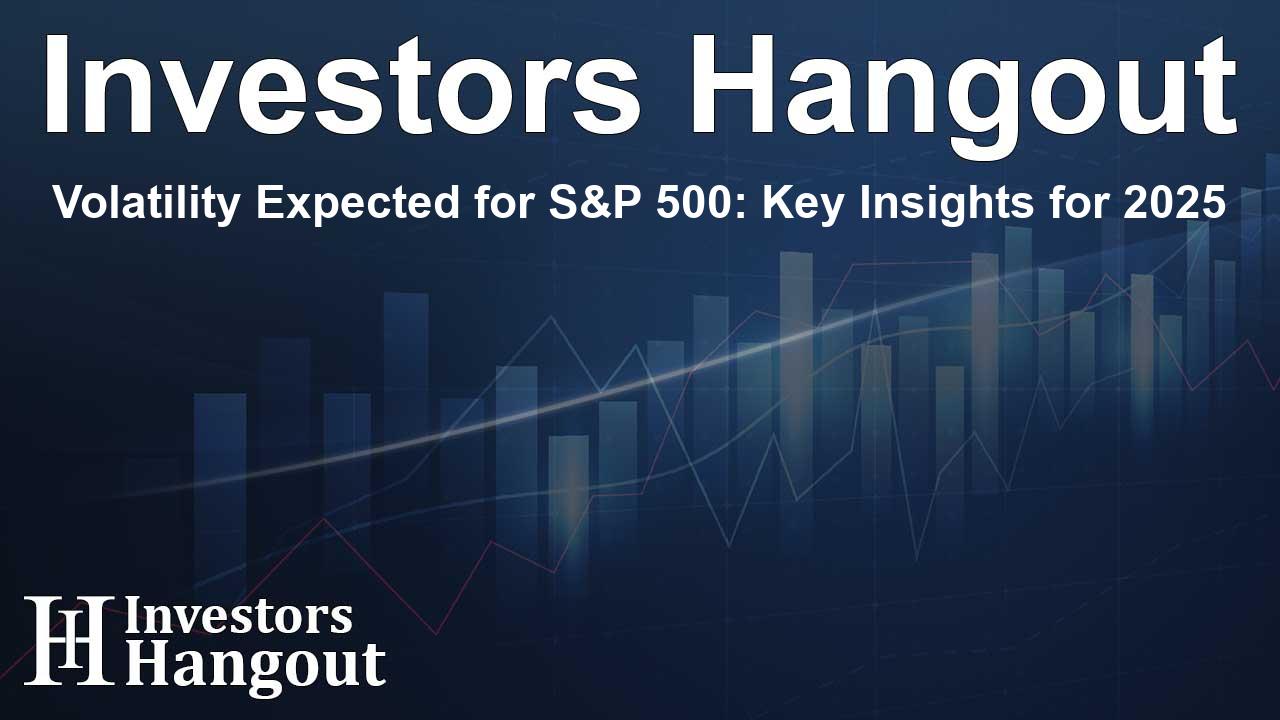Volatility Expected for S&P 500: Key Insights for 2025

Preparing for Market Shifts in 2025
The S&P 500 index is nearing the end of an extraordinary two-year streak, characterized by growth of over 20%. This achievement, remarkable within a 150-year context, prompts caution as market conditions may be evolving. Michael Hartnett, chief investment strategist, suggests that while this upward trend has been exhilarating, the sustaining momentum may not be guaranteed.
Historic Patterns of Consecutive Gains
The S&P 500, particularly through the SPDR S&P 500 ETF Trust SPY, has shown impressive gains of 24% in both 2023 and 2024. Such consecutive successes have only been recorded four times historically in the last century and a half. The instances occurred during 1927-‘28, 1935-’36, 1954-’55, and 1995-’96, showcasing a rare but exciting phenomenon.
Patterns of Market Reactions
History indicates that post-streak years can be volatile, as evidenced by significant downturns following periods of robust market performance. For example, following the gains in 1927-28, the market saw losses of 12% in 1929 and a catastrophic 28% in 1930. Such precedents signal that investors should brace for potential fluctuations as 2025 approaches.
Possible Outcomes Based on Economic Drivers
Hartnett identifies three pivotal factors that could influence the S&P 500’s trajectory in 2025:
- Robust Economic Environment: Companies are reported to be ramping up operations in anticipation of possible tariffs. Additionally, tightening immigration controls are resulting in an abundance of labor hoarding, while unemployment claims are significantly declining.
- Potential for Favorable Bond Yields: Despite the massive U.S. debt reaching $36 trillion alongside a GDP deficit of 7%, market adjustments are forecasted. Bank of America is projecting numerous global rate cuts, which could foster a supportive environment for continued stock growth.
- Political Climate Influences: With a vested interest in maintaining strong equity performance, current administrations are expected to support risk assets like cryptocurrencies to stimulate economic vigor, especially in an election year.
Challenging Valuations Ahead
As we analyze the S&P 500’s trailing price-to-earnings ratio, currently at 26.5x, it stands as the fourth-highest valuation in 125 years. The market is notably high compared to international securities, with only 10 businesses constituting a remarkable 37% of its overall market capitalization.
This concentration is largely attributed to a select group of tech giants known as the “Magnificent Seven,” which collectively added approximately $4 trillion to the market cap in 2024 alone.
Emerging Risks of Inflation
Looking ahead, Bank of America’s Investment Clock illustrates a transition from a recovery phase in 2024 to a projected inflation boom in 2025. This change may bring rising rates and cost pressures to the forefront.
Hartnett remains positive towards commodities as protective measures against this looming scenario, though he does raise a cautionary note regarding equities potentially reaching their peak in early 2025.
Frequently Asked Questions
What does the S&P 500's performance history indicate?
Historical data reveals that after notable consecutive gains, markets often experience significant fluctuations, suggesting potential volatility ahead.
What are the key drivers for the S&P 500 in 2025?
Three main factors could support growth: a robust economic backdrop, favorable bond yields, and strategic political motives.
How do current valuations of the S&P 500 compare historically?
Currently, the price-to-earnings ratio is among the highest recorded, indicating potential overvaluation risks.
What should investors anticipate in 2025?
Investors should prepare for potential market volatility due to historical patterns and economic changes that may occur.
How might inflation affect the stock market in 2025?
If inflation rises, it may challenge the current bull market trend, influencing investor behavior and market stability.
About Investors Hangout
Investors Hangout is a leading online stock forum for financial discussion and learning, offering a wide range of free tools and resources. It draws in traders of all levels, who exchange market knowledge, investigate trading tactics, and keep an eye on industry developments in real time. Featuring financial articles, stock message boards, quotes, charts, company profiles, and live news updates. Through cooperative learning and a wealth of informational resources, it helps users from novices creating their first portfolios to experts honing their techniques. Join Investors Hangout today: https://investorshangout.com/
Disclaimer: The content of this article is solely for general informational purposes only; it does not represent legal, financial, or investment advice. Investors Hangout does not offer financial advice; the author is not a licensed financial advisor. Consult a qualified advisor before making any financial or investment decisions based on this article. The author's interpretation of publicly available data shapes the opinions presented here; as a result, they should not be taken as advice to purchase, sell, or hold any securities mentioned or any other investments. The author does not guarantee the accuracy, completeness, or timeliness of any material, providing it "as is." Information and market conditions may change; past performance is not indicative of future outcomes. If any of the material offered here is inaccurate, please contact us for corrections.